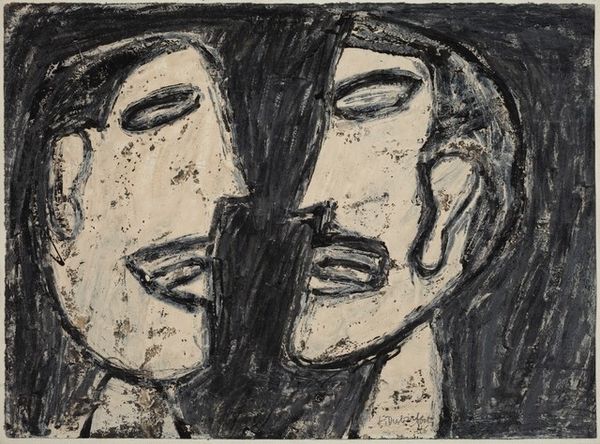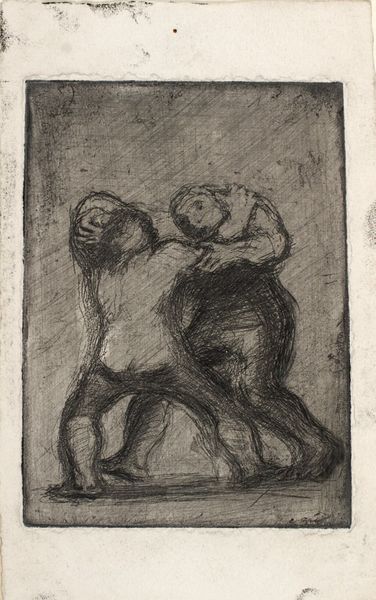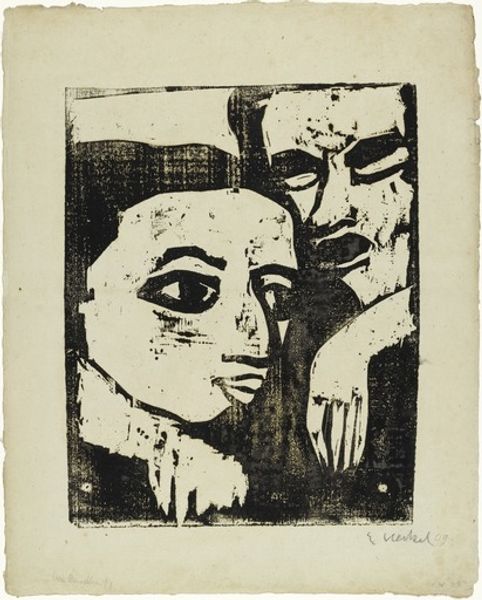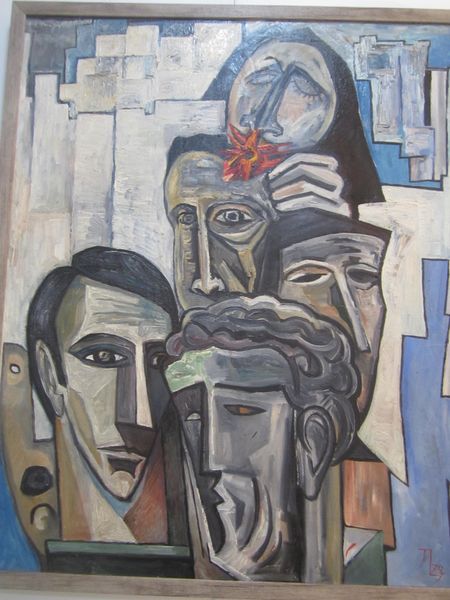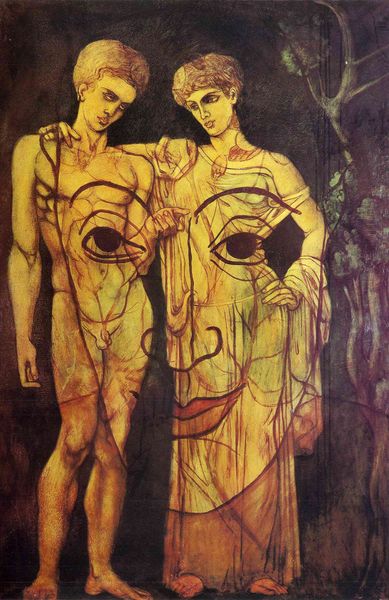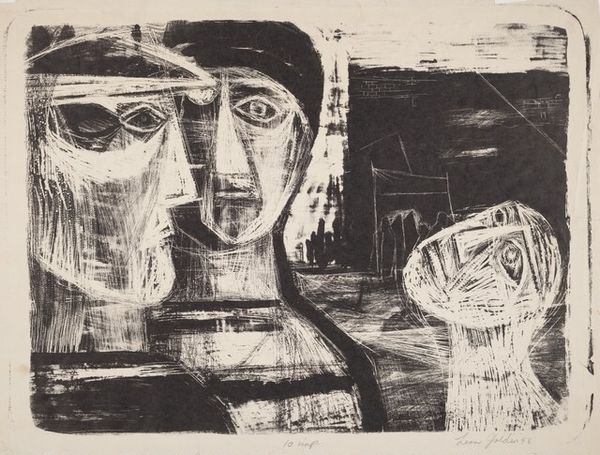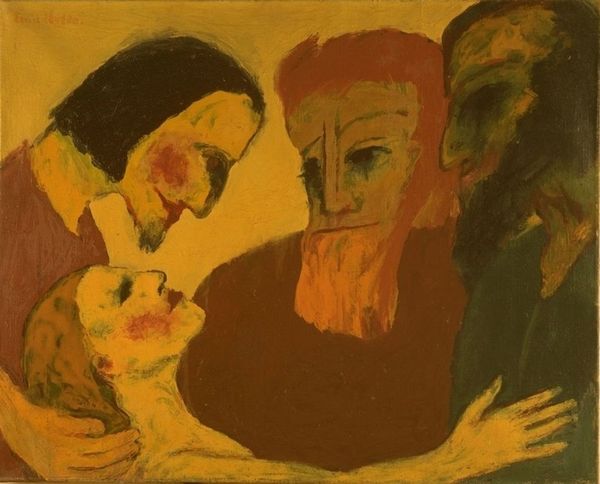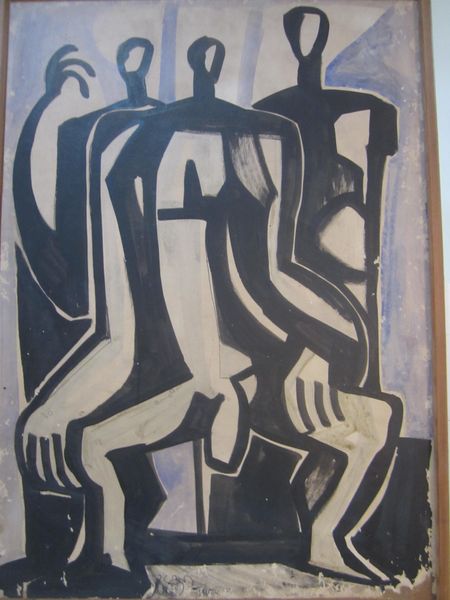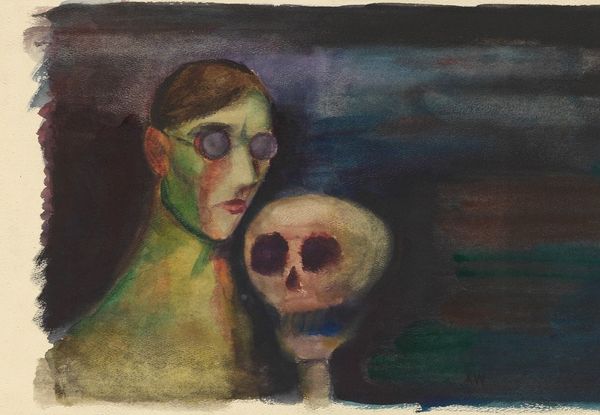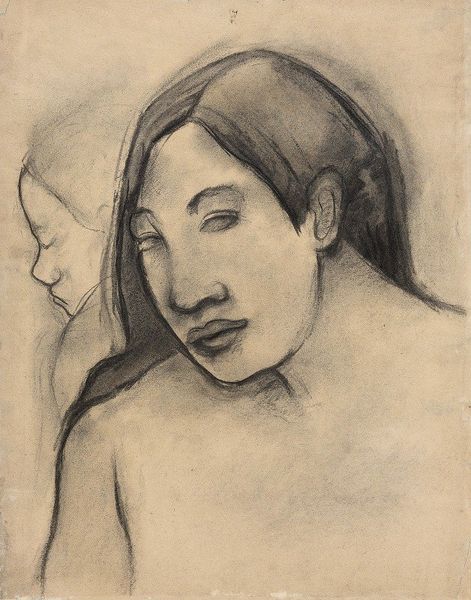
drawing, paper, charcoal
#
portrait
#
drawing
#
caricature
#
german-expressionism
#
charcoal drawing
#
figuration
#
paper
#
abstract
#
expressionism
#
portrait drawing
#
charcoal
#
modernism
Copyright: Public Domain: Artvee
Editor: This charcoal drawing, "Der Junge und der Alte," or "The Young Man and the Old Man," by Karl Wiener, dates from around 1930. I’m struck by the starkness of the figures, and their almost haunting gazes. How do you interpret this work? Curator: Immediately, I see the visual echoes of the Expressionist movement, especially in the stark lines and exaggerated features. What’s fascinating is the duality, the “young” and “old.” It’s a loaded symbol, isn’t it? Consider what youth and age represented in 1930, especially in Germany. Do you see that tension played out in the composition itself? Editor: I think so. The younger figure's eyes are wide, almost fearful, while the older one seems resigned, or perhaps even…empty. It makes me think of a loss of innocence. Curator: Precisely! The eyes, traditionally windows to the soul, are heavily emphasized. Look at the young man’s brow – the anxiety almost vibrates off the paper. And consider the materials: charcoal, a medium easily smudged, erased… ephemeral. Does that inform your reading of the figures and their relationship? Editor: Maybe it's about the older generation passing down a burden, a trauma, to the younger one, and that being etched, however fleetingly, onto them? Curator: It is like an imprint of experience, then. That feeling of impending doom or resignation feels very particular to the interwar period. The weight of history, you might say, made manifest. Editor: That makes me see the drawing in a completely different light! It’s more than just two figures; it’s a commentary on a whole era. Curator: Indeed. And those stark contrasts can become lasting impressions when viewing symbols from this period.
Comments
No comments
Be the first to comment and join the conversation on the ultimate creative platform.
